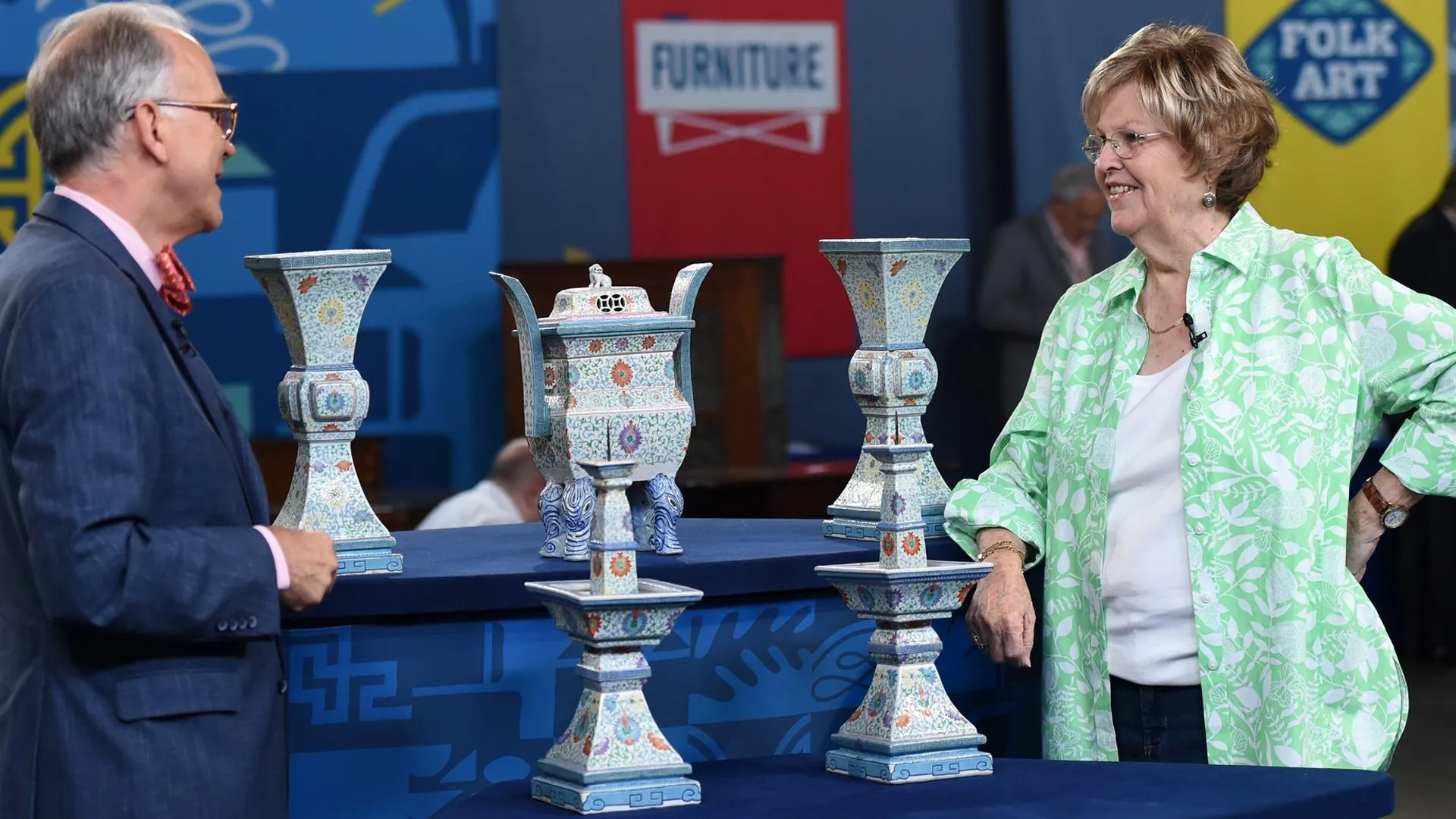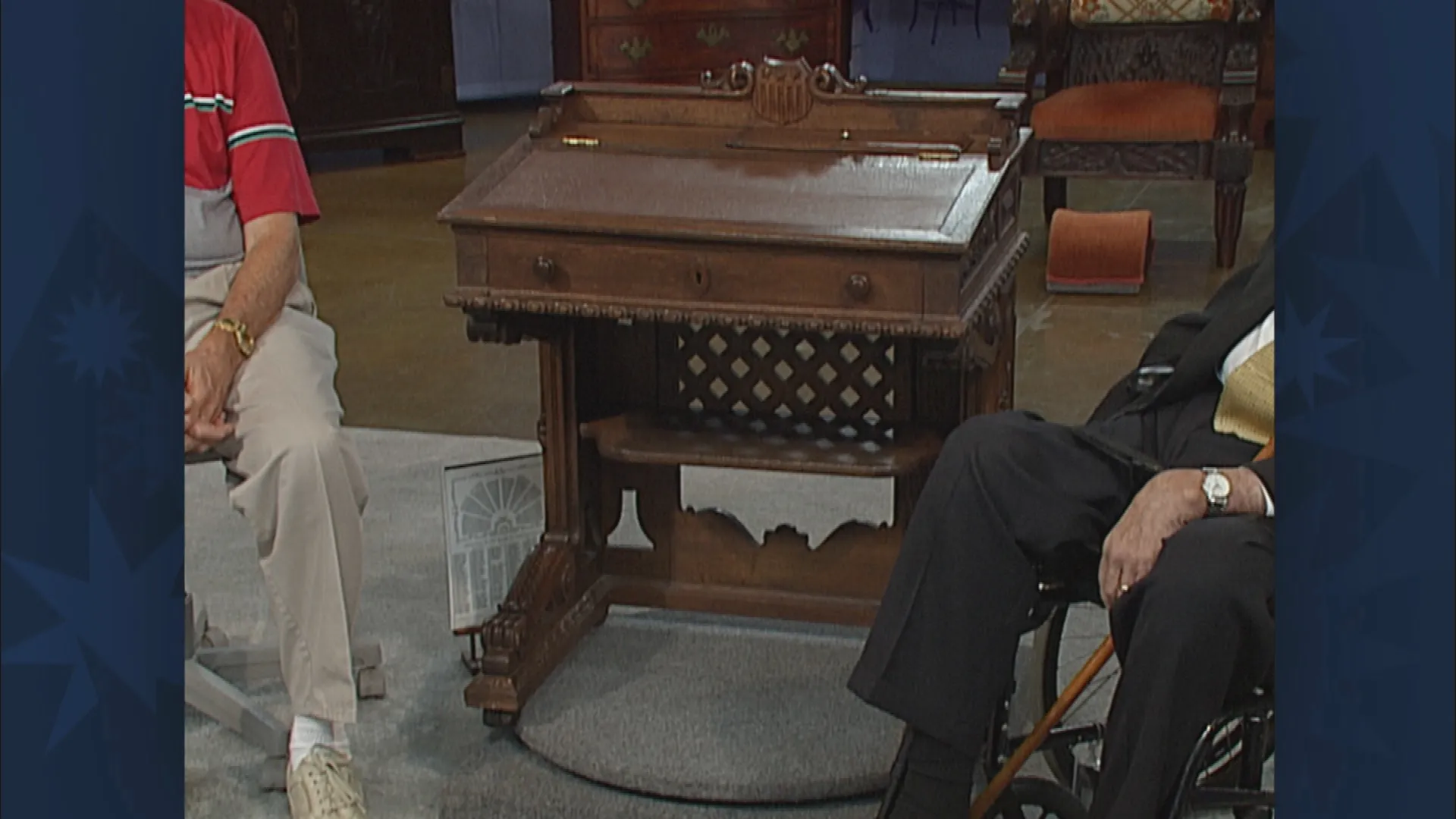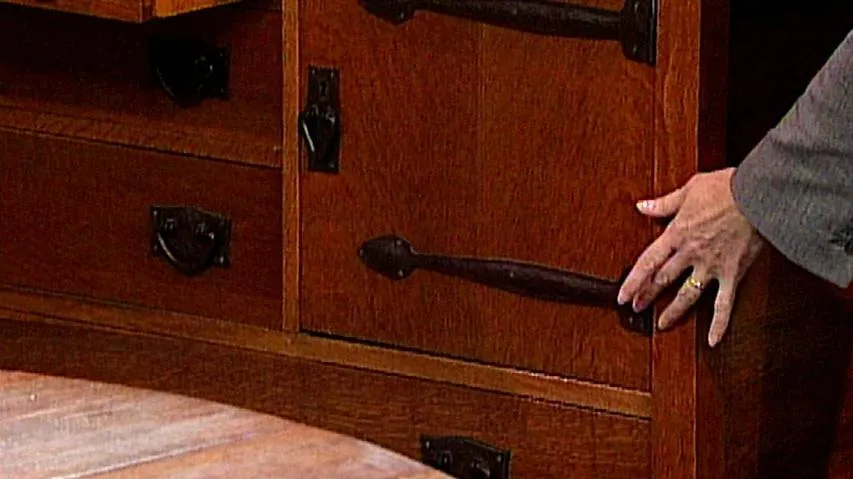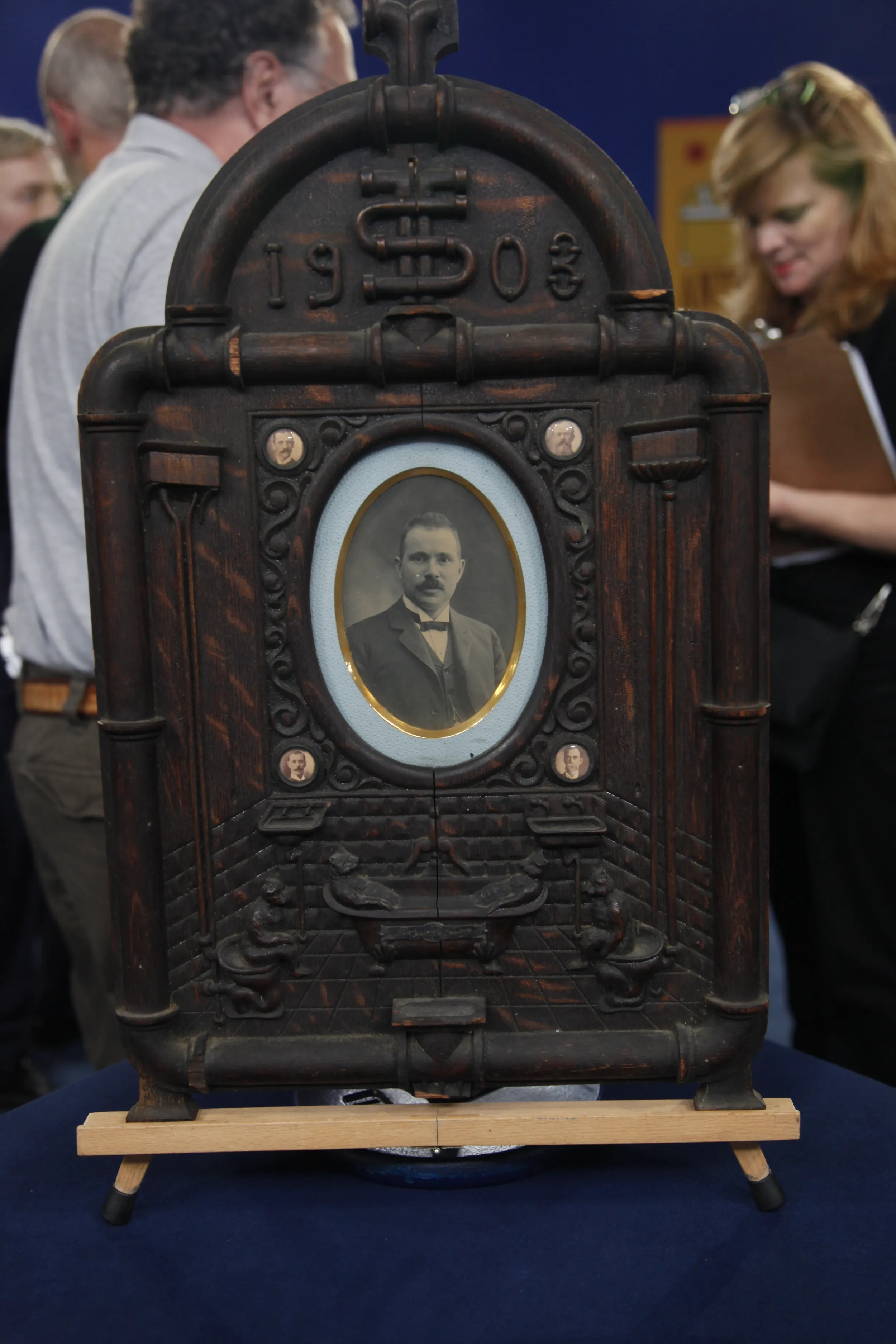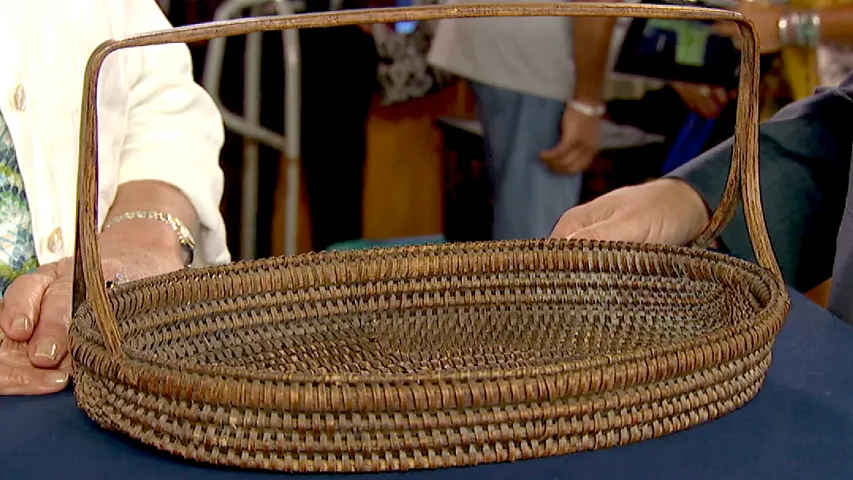GUEST: Now, this is a Frank Lloyd Wright chair from the Frank L. Smith Bank in Dwight, Illinois, from about 1905.
APPRAISER: And how did you acquire the chair?
GUEST: I went to visit the bank in 1975, and I was shown around by a man, and I took some photographs and sent them to him later. And he retired about a year later. When he retired, he got two chairs, and this is one of them, and he offered to sell it to me for $150.
APPRAISER: That's how much you paid for it?
GUEST: Yes.
APPRAISER: So it's a chair by Frank Lloyd Wright, as you said, and the bank was designed... the initial plans were 1904, and I think it was completed in 1906. And so 1905 is exactly when the chair dates from. As we know, Frank Lloyd Wright is one of the most important American architects of the 20th century, and he was most well known for his philosophy of organic architecture, which is sort of exemplified in the Falling Water building. This is a very interesting example of his work in that it's quite institutional. But then, if we're to rotate it to the back, this is where we really see his work come to life. And what's very interesting is that we've only been able to find one illustration of this chair. It's from a 1981 publication on his work. But they didn't shoot the chair from the front. They shot it from the back because it's so much more of a Frank Lloyd Wright chair from the back than the front. It does go into detail to describe that the legs are on this wonderful 45-degree angle, which is again very architectural. So the chair is made of oak.
GUEST: Yes.
APPRAISER: And many of Wright's chairs and pieces of furniture were made of oak. To the best of our knowledge, another model of this chair has not come up for sale. Interestingly, from the bank, an armchair has come up for sale, and a work table as well. The bank was one of the 532 buildings that he completed. He did over 1,000 designs, but there are only 532 that were completed. The condition appears to be original, and that's just fine. There's some ink stains to the seat, and then also along the top rail, you can see the finish has worn off. The casters are replaced, but it did originally have casters. So right now, the casters, it makes this chair sit a little higher than it normally would. Condition's not a factor; rarity is a factor. But the seat, because it's quite institutional, it's hard to then decide whether a Frank Lloyd Wright purist would go for it or not. We believe a conservative auction estimate would be around about $5,000 to $8,000. If the right buyers come along, it could easily exceed $10,000, but because it has never come up before and because there's this institutional nature, we believe a cautious estimate, as I said, is about $5,000 to $8,000.
GUEST: Sure, great, thank you.

